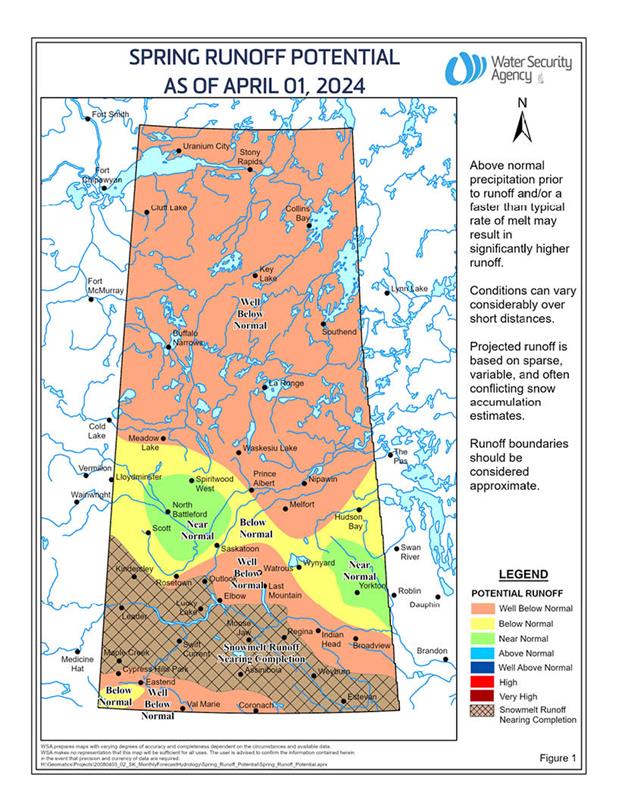The Water Security Agency (WSA) released its spring runoff report for 2024 on Friday.

Due to warmer-than-normal March temperatures, the runoff in many areas of southern Saskatchewan started or even completed early.
While some areas of the province had high flow advisories issued, some experienced the potential for flooding.
“So you can have a complete contrast of two situations versus the eastern side of Saskatchewan and the western or southwestern,” said Patrick Boyle a spokesperson for WSA.

Get daily National news
“Ideally, we look for that plus-five, minus-five swing in spring runoff and that is (a) slow gradual melt where it’s freezing at night. But then moving during the day when things get into trouble is when we stay above zero and get hotter temperatures in the ten, 15 degrees and then don’t freeze at night,” said Boyle.
For many areas in the province, moisture levels remain below normal or well below normal said the WSA in a press release. But the late-season snowfalls in March helped improve conditions.
Out of the 45 water supply reservoirs in the province, 33 are or are expected to be full, six are expected to be 70 to 90 per cent full and only six are expected to remain low once runoff is complete.
“Ideally, we want to see some more precipitation come down there and fill those reservoirs,” said Boyle. “It’s not a water supply issue as far as drinking water. It’s more impacts on irrigation season and how much water there will be for irrigators.”
The river is still covered in ice in the north Saskatchewan and Saskatchewan River systems and flows are slightly above the average for this time of year.
The amount of runoff Saskatchewan will see from the Rockies will depend on the timing of the snow melting and the rain in May and June said WSA.
“Based on the current snowpack in the mountains and the low water supply levels in Alberta, there is a higher probability that the inflows into Lake Diefenbaker this spring and summer will be below normal,” said WSA in their press release.









Comments